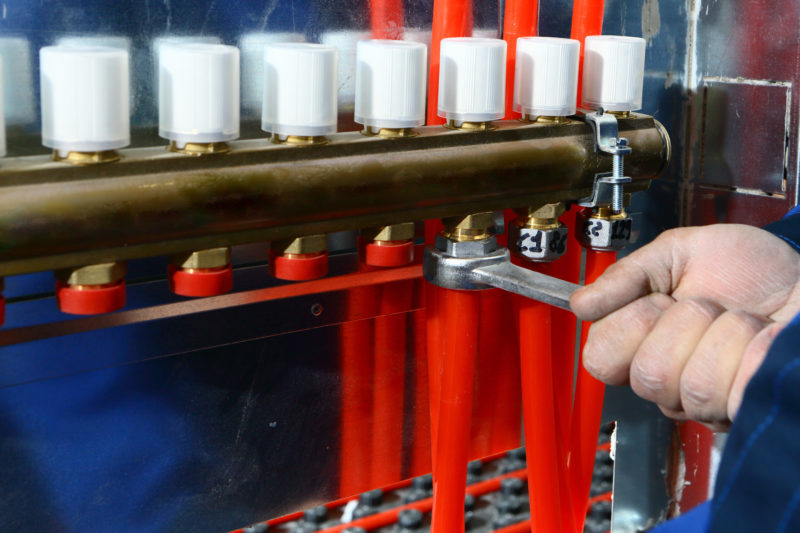If you have radiant heat in your Baltimore, Maryland, home, and you’re experiencing signs of leaks, it’s time to find and fix them before your system needs expensive repairs. Explore how air-pressure tests, infrared thermal imaging, and helium can be used to detect radiant heating system leaks.
What Is Radiant Heat?
Radiant heat uses hot water circulated through pipes or tubing installed inside the walls, floorboards, or the concrete slab of your home to bring heat into your house. Radiant heaters, called radiators, are installed along the baseboards of the house and distribute the heat. When radiant heat pipes occupy the insides of floorboards, they can heat an entire room. Radiant heating is a clean heating option, requires no ductwork, and needs minimal maintenance.
Generally, a central boiler is used to heat the water. Boilers are an efficient way to heat your home, and many of today’s boilers have ratings over 95 percent of the AFUE (Annualized Fuel Utilization Efficiency). They operate using either gas or oil, and modern boilers have many safety and energy-efficient features.
However, if your radiant system or boiler is older and the heating system has not been maintained, you could develop a leak. Since most of the pipes are hidden or buried inside the walls, floors, and slabs of the home, finding the leaks can be a challenge. Keeping a heating system maintenance agreement can be an excellent way to extend the life of your boiler and heating system.
Conducting an Air-Pressure Test
If you notice that your radiant heat is not warming your home sufficiently, and you suspect that you may have a leak, an air-pressure test can confirm your suspicions. You may not be able to pinpoint the exact location of the leak, but if the pressure is reduced, then a leak possibly exists in the pipes, tubing, or relief valves. If you believe you have a problem with your radiant heating system or boiler, contact us at Griffith Energy Services so that we can conduct an air-pressure test.
Using Infrared Thermal Imaging
Instead of randomly exploring your floors and walls looking for leaks, infrared thermal imaging can be a way to pinpoint the leak. Infrared thermography uses a tool similar to a camcorder that produces infrared light to detect heat radiation or variables in temperature measurements. The thermal camera can detect leaks by finding abnormally hot areas that may spread out. These hot spots usually indicate an area where a leak may be present. Once the thermal imaging tool has discovered the leak, then the area can be opened and repaired.
Employing Helium to Detect Leaks
Besides infrared imaging, leaks can also be detected using helium. The advantage of using helium is that it can detect even the smallest of leaks, before too much water can spread and cause large amounts of damage. Helium is a small molecule and is lighter than air. It rises quickly and can travel through concrete, carpets, and tile and wood floors.
The process for using this type of leak detection is complex, and only a professional should perform the procedure. First, a radiant heating system professional will perform a hydrostatic test to determine how much water is leaking. Then, all of the water from the radiant tubing must be drained. The next step involves filling the drained tubing with helium gas to reach the same pressure as the previous hydrostatic test.
A technician then passes a detector over the floor and monitors activity on an LED screen. If a leak is in the pipes or tubing, a rapid increase of helium in parts per million will occur. Once the leak is found, it can be repaired. Once a service professional has repaired the leak and refilled the system with water, one more hydrostatic pressure test will be completed to determine if the leak has been properly corrected.
Having a leak in your radiant heating system can be frustrating and challenging. However, with advanced tools and technology, the leaks can be repaired with minimal impact on your home. If you see signs of water leaks from your radiant heating system, or if your boiler needs repairs or replacement, call Griffith Energy Services today at 888-474-3391.
Image provided by Shutterstock




